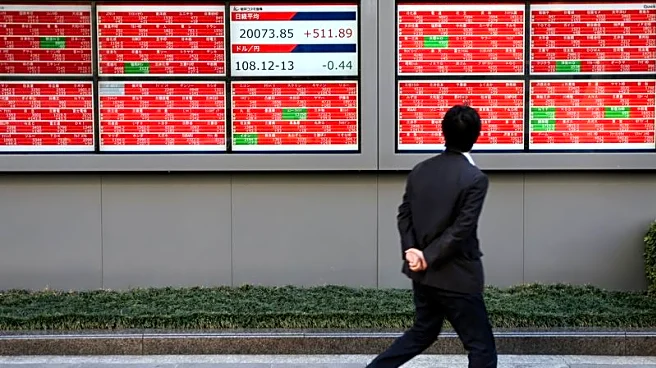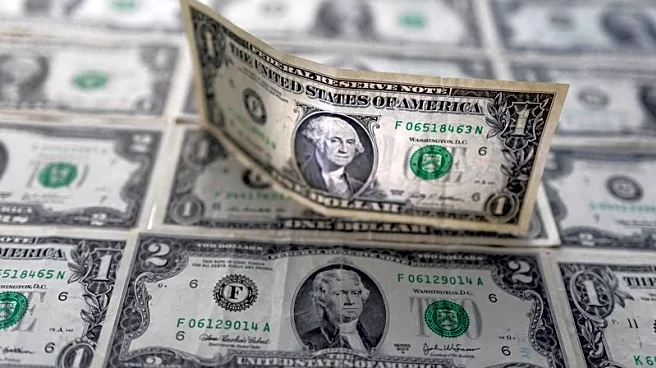What's Happening?
Gold prices have seen a notable increase, with spot gold rising over 1% to approximately $3,984 per ounce. This rise comes as investors shift away from risk assets, influenced by recent economic data and
Federal Reserve actions. The ADP National Employment Report indicated an increase of 42,000 private-sector jobs in October, which slightly reduced the likelihood of further rate cuts by the Federal Reserve. Despite this, the Fed's recent 25 basis point cut and Chair Powell's cautious stance on future cuts have kept gold prices near the $4,000 mark. The broader market context includes a pullback in global equities and a slight easing of the U.S. dollar, contributing to the safe-haven appeal of gold.
Why It's Important?
The movement in gold prices is significant as it reflects broader economic uncertainties and investor sentiment. Gold, often seen as a safe-haven asset, tends to rise when investors are wary of economic instability or market volatility. The Federal Reserve's decisions on interest rates are crucial as they impact the attractiveness of non-yielding assets like gold. A cautious approach by the Fed suggests ongoing concerns about economic stability, influencing investor behavior. The increase in gold prices also highlights the interplay between macroeconomic data, such as employment figures, and monetary policy, which can have far-reaching effects on investment strategies and market dynamics.
What's Next?
Investors will closely monitor upcoming economic data releases, particularly in light of the federal government shutdown, which has disrupted official data availability. Private reports, such as those from ADP, will gain importance in providing macroeconomic signals. Additionally, market participants will scrutinize Federal Reserve communications for indications of future policy directions, especially regarding interest rate adjustments. The trajectory of the U.S. dollar and global equity markets will also play a role in shaping gold price movements. ETF flows and central bank activities remain key factors that could influence gold's performance in the coming months.
Beyond the Headlines
The current situation underscores the complex relationship between economic indicators, monetary policy, and asset prices. The reliance on private data due to the government shutdown highlights vulnerabilities in economic reporting and the potential for increased market volatility. Furthermore, the sustained demand for gold-backed ETFs and central bank purchases reflects a strategic shift in asset allocation amid uncertain economic conditions. This trend may signal long-term changes in investment preferences, with implications for global financial markets and economic policy.












